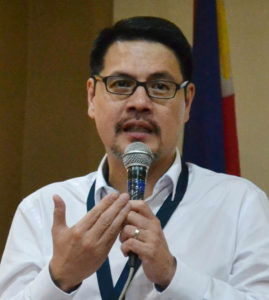
This is a four-part article outlining the major problems confronting the Philippine Bureau of Customs; the previous efforts to reform and modernize the agency; key issues and concerns that continue to confront it; areas for policy and institutional reforms; and the challenges facing the new administration. This article also provides recommendations for specific policy, regulatory, and operational programs, both in the immediate and the medium terms.
This article was also presented at 11th World Customs Organization Partnerships in Customs Academic Research and Development Conference in Manila from 27-29 September 2016.
Introduction
Last May 9, 2016, the Philippines held its national elections, which are normally held every six years. Just two weeks after the elections, before the new President assumed office on July 1, 2016, the President-elect announced in an interview made before a major television network that he intends to abolish the top three most corrupt agencies of government, one of which is the Philippine Bureau of Customs (BOC).
Corruption in the BOC, to a large extent, is due to the very antiquated customs regulatory environment in the Philippines, with most of its laws and practices dating back to the 1980s and earlier. In addition, while there is an existing automated customs operating system in the BOC, almost all of its customs processes require manual processing and face-to-face interaction with customs personnel.
These antiquated and tedious processes have largely contributed to making the BOC one of the most corrupt agencies in the Philippines. In various national surveys, too, the BOC has consistently been perceived as one the most corrupt national agencies.
Customs Modernization and Tariff Act (CMTA)
On May 30, 2016, former President Benigno Aquino III signed Republic Act No. 10863, otherwise known as the “Customs Modernization and Tariff Act” or CMTA. This new law generally adopts and implements the Revised Kyoto Convention (RKC), known formally as the “The International Convention on the Simplification and Harmonization of Customs Procedures”, as well as the provisions of the World Trade Organization Trade Facilitation Agreement (TFA). Moreover, the CMTA overhauls the existing Tariff and Customs Code of the Philippines (TCCP), most provisions of which have been in effect for more than fifty years.
Some of the significant features of the CMTA are as follows:
- Increase of the de minimis value to Php10,000 FCA value;
- Redefinition of the role of the customs broker in the import process;
- Increase in the tax exemption for returning OFWs and foreign residents;
- Reduction of fines and penalties for errors or omissions;
- Power to issue levy and distraint after conduct of customs audit;
- Provision for the ) program;
- Mandatory use of ICT;
- Revision of the concept of abandonment;
- Simplification of the appeals process;
- Creation of a Forfeiture Fund; and
- Provision for an advance ruling mechanism.
The Philippine Bureau of Customs
Headed by a Commissioner, BOC is the government agency principally tasked to: (a) enforce and implement customs laws and regulations, (b) assess and collect customs revenues from imported goods, (c) prevent entry of smuggled goods, and (d) facilitate international trade for both ports and airports.
BOC collects import duty, value added tax (VAT), and excise tax on imported goods, with annual collections accounting for roughly 20% of total government revenue. Of the total annual collection in 2015, VAT accounted for 75%, import duty for 15%, and excise tax for 9%.
The agency handles approximately 200,000 import transactions per month, with one third of the transactions processed manually, while the rest are lodged manually and electronically. Under the existing risk management scheme of the electronic-to-mobile (e2m) Customs System, BOC’s automated operating lodgment facility, about 4% are immediately cleared as Super Green Lane (SGL) shipments, 4% as Green shipments, 80% as Yellow shipments (for document examination), and 12% as Red shipments (for physical examination or for x-ray scanning).
The agency is also tasked to implement regulations on imported goods issued by about forty government regulating agencies.
Further, BOC is involved in most of the trade negotiations of the various free trade agreements to which the Philippines is a party. Currently, the Philippines has existing regional Free Trade Agreements (FTAs) and one bilateral trading agreement with Japan, i.e. the Philippines–Japan Economic Partnership Agreement (PJEPA). Most of the FTAs are mainly because of ASEAN and the various ASEAN+1 Agreements with Australia, China, India, Japan, Korea, and New Zealand. There are also ongoing negotiations with various other countries and regional groups.
(For part 2, click here.)
Agaton Teodoro O. Uvero is an international trade, customs (indirect tax) and supply chain expert. He provides advisory and training service to most of the top corporations and industry associations. For questions and clarifications, please email him at agatonuvero@yahoo.com.









